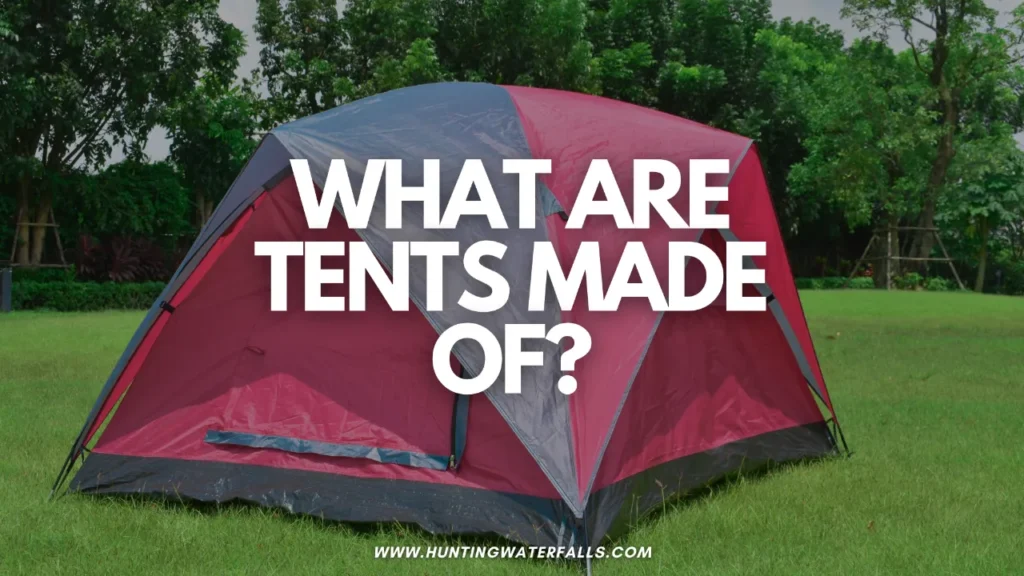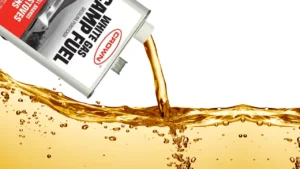Tents come in a variety of different materials and it can be confusing selecting the right one for your camping needs.
What different materials are tents made of and what is the best material for different situations and why should you consider one over the other?
Tents are made from polyester, nylon, DCF (Cuben Fiber), polycotton, canvas and cotton. Polyester and nylon tents are popular due to their light weight and wide availability and can be waterproof with a coating. However, they aren’t breathable.
Cuben fiber is ultra lightweight and waterproof but expensive while polycotton tents are more breathable and durable.
Canvas and cotton are heavy but breathable which helps keep you at a comfortable temperature inside your tent.
If you’re in the market for a new tent, comparing each tent fabric’s properties in detail can help you make the right purchasing decision.
Common Tent Materials Compared
Here’s how the most common tent materials compare:
| Pros | Cons | Best for | |
|---|---|---|---|
| Polyester | Cost-effective Lightweight Waterproof with a polyurethane (PU) coating Easy set-up | Only high denier polyester is rip and tear resistant | Those on a tight budget Hikers |
| Cuben Fiber (DCF) | Ultra lightweight Naturally waterproof Highly durable | Costly | Ultra lightweight backpacking |
| Nylon | Synthetic fiber Lightweight Flexible with tear and rip resistant properties | Typically more expensive than polyester Prone to UV damage | Those looking for a long-lasting but lightweight tent |
| Polycotton | More breathable than polyester Durable | Heavier than nylon and polyester Costly | Camping in windy areas Preventing musty smells in tents |
| Canvas and Cotton | Superior insulation Less noisy in windy conditions Highly durable Breathable Great all-weather tent | Very heavy Expensive Not as waterproof | Those looking for an all-weather tent Transporting your tent by car Maximum comfort |
Polyester
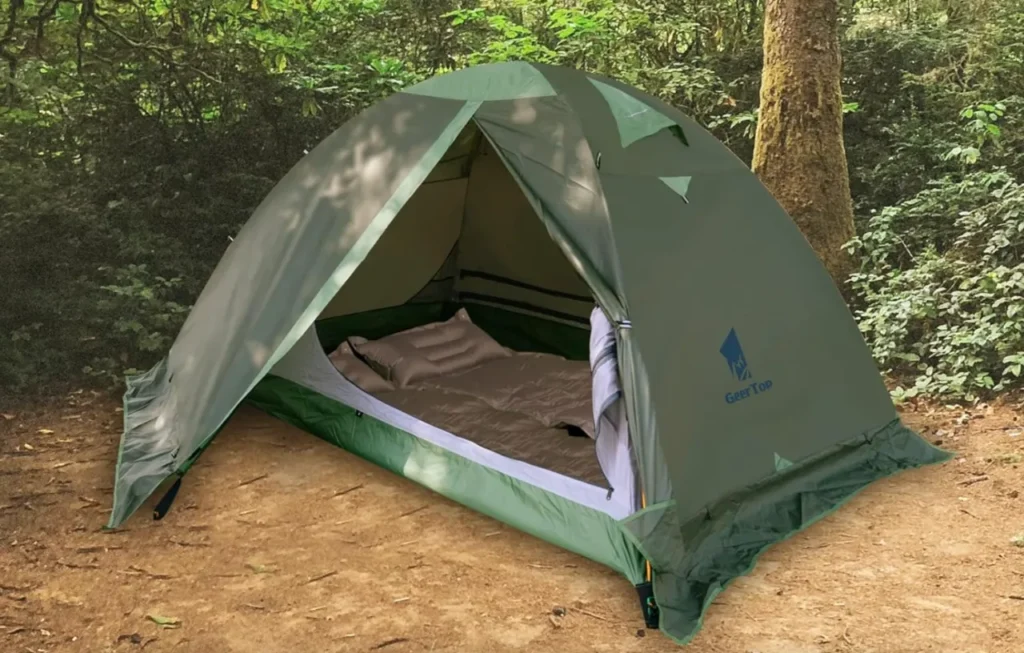
As a good all-rounder material, polyester is the most commonly used tent material today because it’s affordable, easy to fold down and lightweight.
It's what you'll find in most tents these days. Chances are if you're looking at some sort of dome tent then it's likely made from polyester.
However, it can be quite noisy in windy conditions and because of its low weight. It consists of plastic fibers and it isn’t breathable which can make the inside of your tent prone to condensation and stuffy smells after a while.
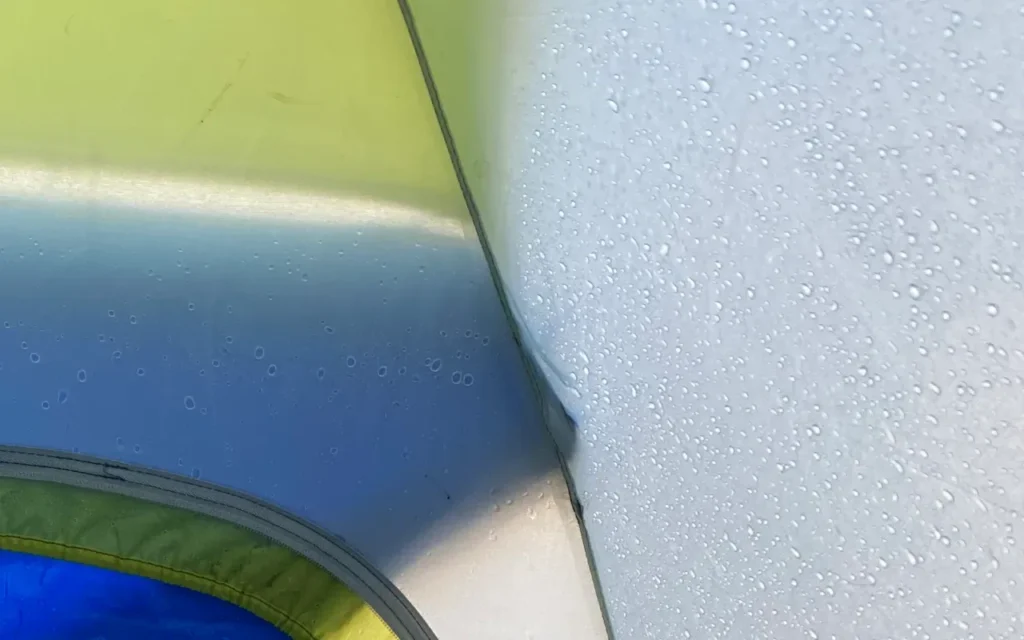
This is why most tents come with 2 layers. An inner breathable layer where moisture can easily escape and the outer waterproof layer.
This is so water will condense on the inside of the outer layer and won't get into your tent. If you have just one layer you'll get a lot of condensation in your tent and may need to use one of these tent condensation solutions.
Polyester also isn’t a good insulating fabric and your tent will likely feel cold on chilly nights but hot when it’s warm. If you often camp in warm places, this can be remedied by removing the rain fly or keeping the waterproof entrance partially unzipped.
Just make sure to keep the insect screen closed at all times of your tent will fill up with bugs.
If you struggle with humidity in your polyester tent you could always use a dehumidifier or make an easy one yourself.
If weight isn’t a huge issue for you, I recommend going with a higher-denier polyester tent. A higher denier rating means the fabric is stronger, heavier and better quality and 80 is ideal for polyester tents as it means it’s less prone to ripping or tearing.
Polyester also isn’t naturally waterproof and if this is important to you, opt for one with a polyurethane (PU) coating. This won’t make it completely waterproof in those huge storms but adds water resistant properties which helps keep light rain out.
The PU coating can degrade in sunlight so be sure to keep your tent away from direct sunlight when not in use.
If you’re looking for a blackout tent, these are typically made from polyester and vinyl which effectively absorb and diffuse light.
Nylon
Nylon is another popular tent fabric and like polyester, it isn’t breathable or insulating. However, it’s more lightweight than polyester.
It is also durable and more resistant to rips and tears due to its flexible fibers.
If you need a waterproof nylon tent, look for one that consists of silicone/SilNylon listed as part of the fabric. The silicone component helps keep moisture out effectively and also adds durability.
Like polyester tents, you should try and keep your nylon tent out of the sun as much as possible because the sun can degrade and weaken the fibers.
Dyneema Composite Fiber (DCF)
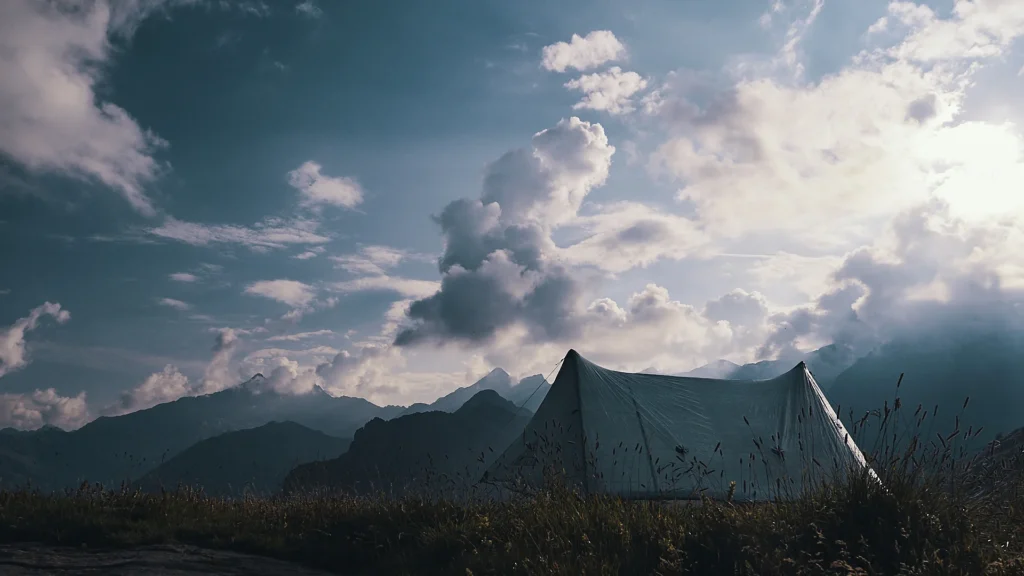
Dyneema composite fiber (DCF) is also called UHMWPE (Ultra High Molecular Weight Polyethylene) and is known for its incredibly lightweight and highly durable properties.
This is the material used in most ultra light tents for backpackers because when weight really matters you want the lightest tent possible.
This fabric is naturally waterproof making it a fantastic choice if you often camp in rainy locations. But this waterproofing also means the inside of your tent can get a lot of condensation too.
DCF tents are usually expensive and I recommend checking the product reviews to ensure that the seams have been well bonded as they can sometimes tear apart (one of the only downsides to DCF tents).
Polycotton
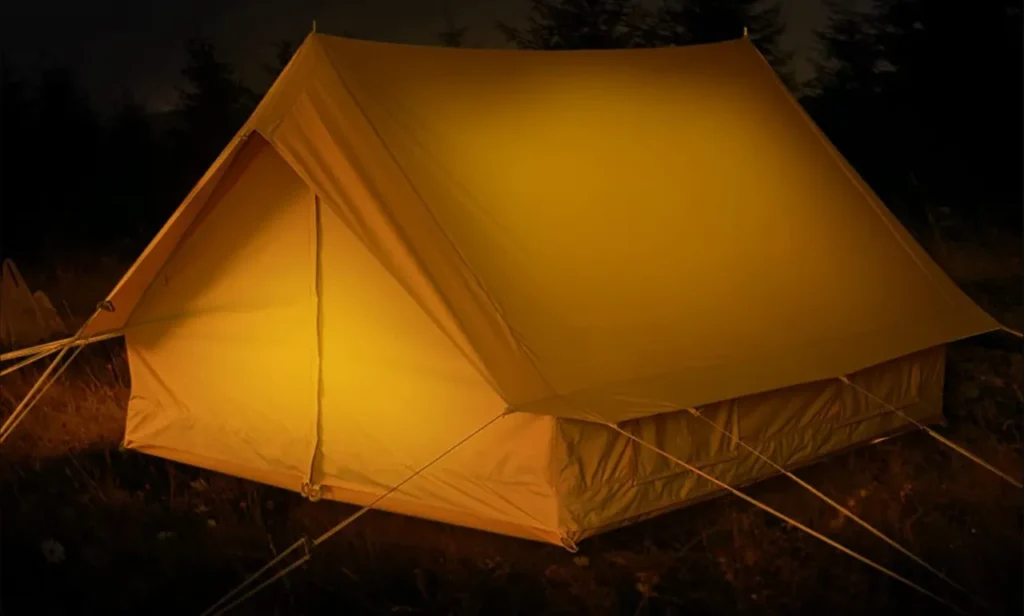
Polycotton tents usually consist of around 35% cotton and 65% polyester and this blend of fabrics combines cotton’s breathability and durability with polyester’s light weight.
The slight breathability makes it more suitable for keeping warm when it’s cold and cool in warm weather. However, the cotton component adds weight making polycotton heavier than nylon or polyester (but not as heavy as canvas or cotton tents).
Polycotton tents are generally more expensive than polyester or nylon tents but their longevity and strength can be worth the investment in the long run.
Canvas and Cotton

This was the material of the tent I grew up using and my dad still has a canvas tent and uses it to this very day.
Canvas makes the most comfortable tents and it's why almost all glamping tents are made from canvas.
Tents were traditionally made of canvas and cotton and the main drawback of these fabrics is the heavy weight. This is a major issue if you hike to your campsite.
The sturdiness and heavy weight has an advantage in that it is not as noisy in windy weather and canvas and cotton are both breathable, durable and last for ages. My Dad's tent is going on 40 years old now and it's still going strong.
The breathability helps prevent stuffy smells inside your tent and also helps keep you cool on warm evenings but cozy and warm when it’s cold.
Another major downside of these tents can be a lack of waterproofing and you may need to use tarps over your tent to keep off the rain in heavy storms.
Modern canvas and cotton tents can be expensive but if price isn’t an issue, I recommend going with one with a waterproof coating for added protection in wet weather.

